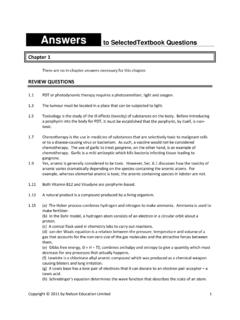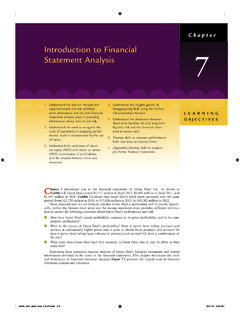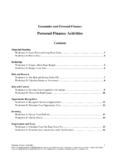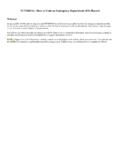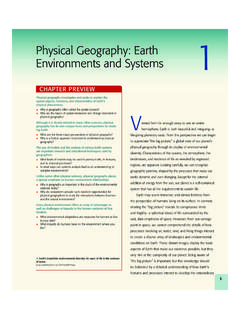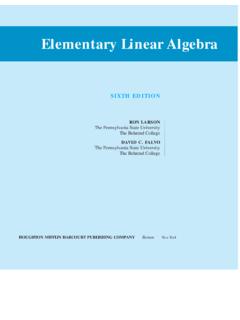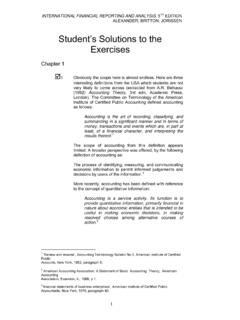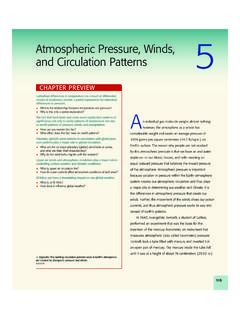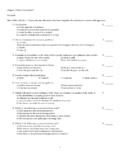Transcription of CHAPTER 14 EXTERNALITIES, MARKET FAILURE, AND PUBLIC CHOICE
1 272 CHAPTER 14 externalities , MARKET failure , AND PUBLIC CHOICE CHAPTER in a Nutshell So far, this book has described consumption and production of goods where all of the costs and benefits are borne directly by those who do the consuming and producing. However, many types of consumption and production activities spill over to affect third parties. These unintended spillover effects are called economic externalities by economists. externalities may be negative or positive for third parties. For example, a negative externality might be having an Eminem fan in the dorm room next to yours coming home late at night and playing throbbing hip hop music when you have an economics exam at 8:00 the next day.
2 An example of a positive externality is your dorm neighbors playing the same music when you are in a mood to have fun (assuming you like hip hop), not sleep. If you like hip hop and your rowdy neighbors play it regularly, then you can be a free rider, enjoying the benefits of hearing the music without paying for them. Negative externalities impose costs on third parties for which they aren t compensated. Positive externalities are benefits that third parties enjoy without having to pay. In either case, the MARKET has failed.
3 Because no one pays for the costs resulting from negative externalities , too much of these types of activities occurs in a MARKET . On the other hand, because people who create positive externalities aren t paid for the benefits they create for others, the MARKET will generate too few of these activities. Government can correct these MARKET failures. A variety of approaches can be used to address the problem of negative externalities . For example, the government can impose a pollution compensation tax on an activity that creates negative externalities in order to bring the private cost in line with the social cost of the activity.
4 Creating new property forms is another alternative. Here, instead of government directly regulating an activity to make sure that resources are allocated efficiently, resources may be privatized so that individuals will have an incentive to exercise property rights to the resources efficiently. Or, the government may impose obligatory controls regarding certain activities. For example, most municipalities don t allow leaves to be burned or dogs to roam freely. In cases of positive externalities , the role for government is to encourage more of an activity to be undertaken.
5 Government can do this by subsidizing the activity from tax revenues or by simply providing the activity itself, as in the case of PUBLIC goods such as national defense, lighthouses, clean air, and clean water. However, government failure can occur if government fails to buy the quantity of PUBLIC goods that generates maximum efficiency. Government failure can arise because, even with an honest effort, political representatives are unable to accurately measure our preferences regarding the purchase of PUBLIC goods. Another potential problem is that government s choices of PUBLIC goods may reflect the preferences of special-interest lobbies rather than the PUBLIC s interest.
6 Economists who hold this view of PUBLIC CHOICE believe that the production and allocation of PUBLIC goods are dictated primarily by the need for government officials to keep their jobs. After studying this CHAPTER , you should be able to: Explain the difference between negative and positive externalities . Discuss why poorly defined property rights cause externalities . Use graphs to show how MARKET failure can be corrected for both types of externalities . Compare and contrast the different approaches for correcting negative externalities .
7 THE MICROECONOMICS OF PRODUCT MARKETS 273 Define and give examples of PUBLIC goods. Distinguish between a pure PUBLIC good and a near- PUBLIC good. Describe the opposing views of PUBLIC CHOICE . Concept Check See how you do on these multiple - CHOICE questions. externalities exist due to MARKET failure . What is the source of MARKET failure that causes externalities ? 1. The reason that so many economic activities create externalities is that a.
8 Free riders exist b. third parties become involved in decision making c. special-interest groups lobby for them d. property rights are poorly defined e. government failure prevents them from being halted To answer the following question , think about position of the social cost curve relative to the private cost (supply) curve. 2. If the social cost of supplying a good or service is higher than the private cost, then a. the production of the good or service should be subsidized b. the price of the good or service is too low c.
9 The price of the good or service is too high d. obligatory controls are the only way to correct the situation e. the good or service is a PUBLIC good The PUBLIC CHOICE view holds that self-interest guides a large part of political behavior. Would catering to the needs of special-interest lobbies be in the self-interest of government officials who aim to keep their jobs? 3. The PUBLIC CHOICE view of the provision of PUBLIC goods holds that a. government officials always try their utmost to act in the PUBLIC s best interest b.
10 Government failure occurs only rarely c. the PUBLIC chooses government officials in elections and is ultimately responsible for the provision of PUBLIC goods d. special-interest lobbies play an important role in determining the level of provision of various PUBLIC goods e. voting is the best way to determine the level of provision of PUBLIC goods Be able to distinguish between a private good and a PUBLIC good. There are also near- PUBLIC goods. 4. A PUBLIC good is a good whose benefits are a.
